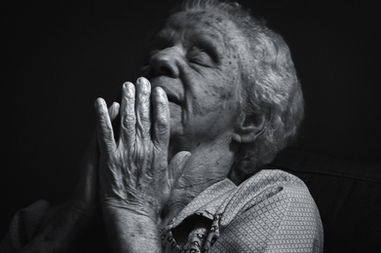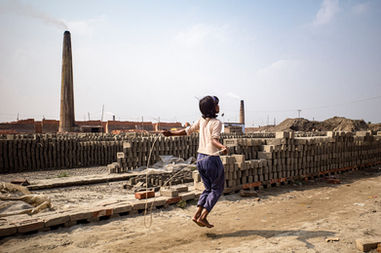
NYC SUBWAY RIDERS BEFORE THE INVASION OF SMARTPHONES
Hiroyuki Ito’s subway photographs reveal a vanished intimacy — strangers lost in thought in a world before digital distractions took hold.
June 22, 2025
PICTORIAL STORY
photography HIROYUKI ITO
story MELANIE MEGGS
There’s a peculiar kind of intimacy that lives in Hiroyuki Ito’s subway photographs. It's not the kind born of conversation or connection — quite the opposite. It’s the intimacy of solitude. Of being lost in thought, adrift in a crowd, present only to oneself. These photographs, made on New York City subways between 2007 and 2008, capture something that has all but vanished in the decade and a half since: the unguarded inner life of strangers in public.
-min.jpg)
Hiroyuki Ito has spent much of his life observing people in motion — in performance halls, on street corners, under stage lights, and deep below the city, on screeching trains beneath the asphalt. Born in Tokyo in 1968, Ito arrived in New York in 1992 more by parental edict than personal ambition. “I graduated from high school and for the next three years, I didn’t do anything,” he recalls. “I didn’t go to school; I had no job — I was a lazy bum staying home all the time. Finally, my mother got sick of me and suddenly told me to go to America and do something.” She handed him the number of a friend’s son studying music in Boston. When the young Ito admitted he didn’t know what he wanted to do with his life, the man offered a simple suggestion: “Go to New York. You might find something.” Ito didn’t know what he was searching for — only that he had to start looking. Over the years, New York gave him direction, mentors, and ultimately, a career. As a freelance photographer for The New York Times for over two decades, he covered countless performing arts events, balancing the precision of visual storytelling with the fluidity of human expression.
But what he captured on the subway during his commutes — those unposed, unscripted interludes — reveal another dimension of his photographic practice: one anchored in patience and reverence for the everyday. There is no spectacle, no peak action, no drama. In these photographs, faces become quiet landscapes of thought. “Did I turn off the gas before I left home?” “How am I going to pay this month’s rent?” “Does he really love me?” “Will my mother be okay on her own?” We’ll never know what any of them were thinking. But that’s the point. These aren’t photographs meant to explain — they’re photographs that suggest. Photography, Hiroyuki reminds us, is not about clarity. It’s about imagination. “A photograph is still and silent,” he says. “It can’t move or speak like a video. It needs the viewer’s mind to complete it.”
It was 2007, the first iPhone had just been released, and though it would soon revolutionize how we live and move through the world, it hadn’t yet infiltrated the subway. Hiroyuki’s photographs, then, become a kind of archaeological record — visual evidence of a now-extinct species: the publicly private New Yorker, whose mind was their only entertainment on the ride home. “I miss the blank facial expressions,” Hiroyuki reminisces.
Of course, Hiroyuki isn’t lamenting the loss of the past for nostalgia’s sake. He's well aware that times change, as do the tools we use to shape our days. “Photography is essentially about time,” he says. “It’s a record of something that is leaving us.” His images aren’t a plea for regression. They’re an invitation to see what was there — and what might still be, if only we look more closely.
There’s a humility to Hiroyuki’s practice that runs counter to much of what we associate with artistic authorship. He doesn’t consider himself an artist, or even a journalist. “I feel more like a municipal clerk,” he offers, “punching the clock and taking pictures every day.” That modesty belies the quiet rigor in his work. Whether documenting actors on stage or riders on a subway bench, he approaches each scene with a sensitivity to rhythm, to breath, to what he calls the “rest” in a musical composition — the moment between notes, where silence makes meaning possible.
This sense of restraint, of going only halfway and allowing the viewer to meet him there, is deeply rooted in Hiroyuki’s Japanese heritage. In a city where everyone is performing, whether consciously or not, Hiroyuki knows when to look, and when to hold back. His camera is his sketchbook. “It’s like a pencil and a small notebook,” he says. “A way of making a quick drawing.” And so, these subway portraits function almost like visual haikus — minimal, contemplative, and open-ended.
There is no attempt to make the subway more glamorous or more despairing than it is. Instead, Hiroyuki focuses on the ordinary magic of people simply being — lost in thought, waiting, transitioning from one place to another. The subway becomes not just a vehicle but a metaphor for a moment suspended between past and future. Between who we were and who we’re becoming. And that’s where the power of these photographs lies. They remind us of something that is both specific and universal: that we all carry secret lives, even in plain sight. That reflection is possible amid the noise. That even in transit, we might be still.
For The Pictorial List community, this project opens a quiet window onto a time not so distant — one we all passed through but rarely stopped to see. Through Hiroyuki’s perspective, we’re invited to slow down, to remember what it felt like, and to rediscover meaning in the ordinary moments that once rushed by unnoticed.

Three decades after his first subway photographs, Hiroyuki Ito still rides the trains — camera in hand, eyes open to the quiet choreography of urban life. The world around him has shifted. He doesn’t mourn the change. He adapts. He watches. He documents. And perhaps, decades from now, his images of people swiping screens and tapping icons will carry their own elegiac beauty, as foreign and fascinating to future viewers as these quiet, analog souls appear to us now. For Hiroyuki, photography is not a pursuit of spectacle or self-expression. It is an act of steady attention, a way of listening without words. And as long as people keep creating fleeting moments of stillness amid the noise, he’ll be there — observing, recording, and quietly reminding us to look a little closer.

Read on Substack >>>
The views, thoughts, and opinions expressed in the text belong solely to the author/s and are not necessarily shared by The Pictorial List and the team.








































